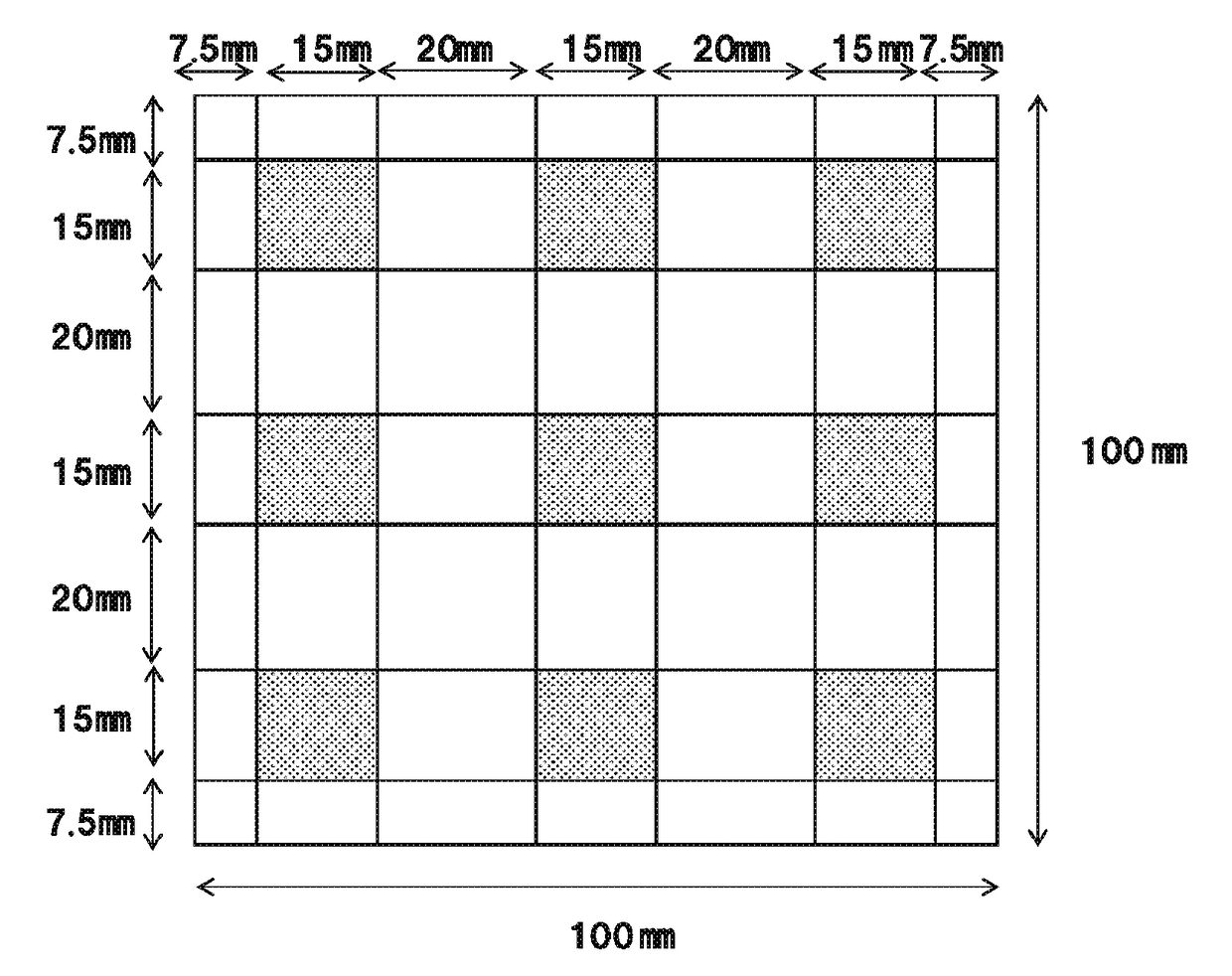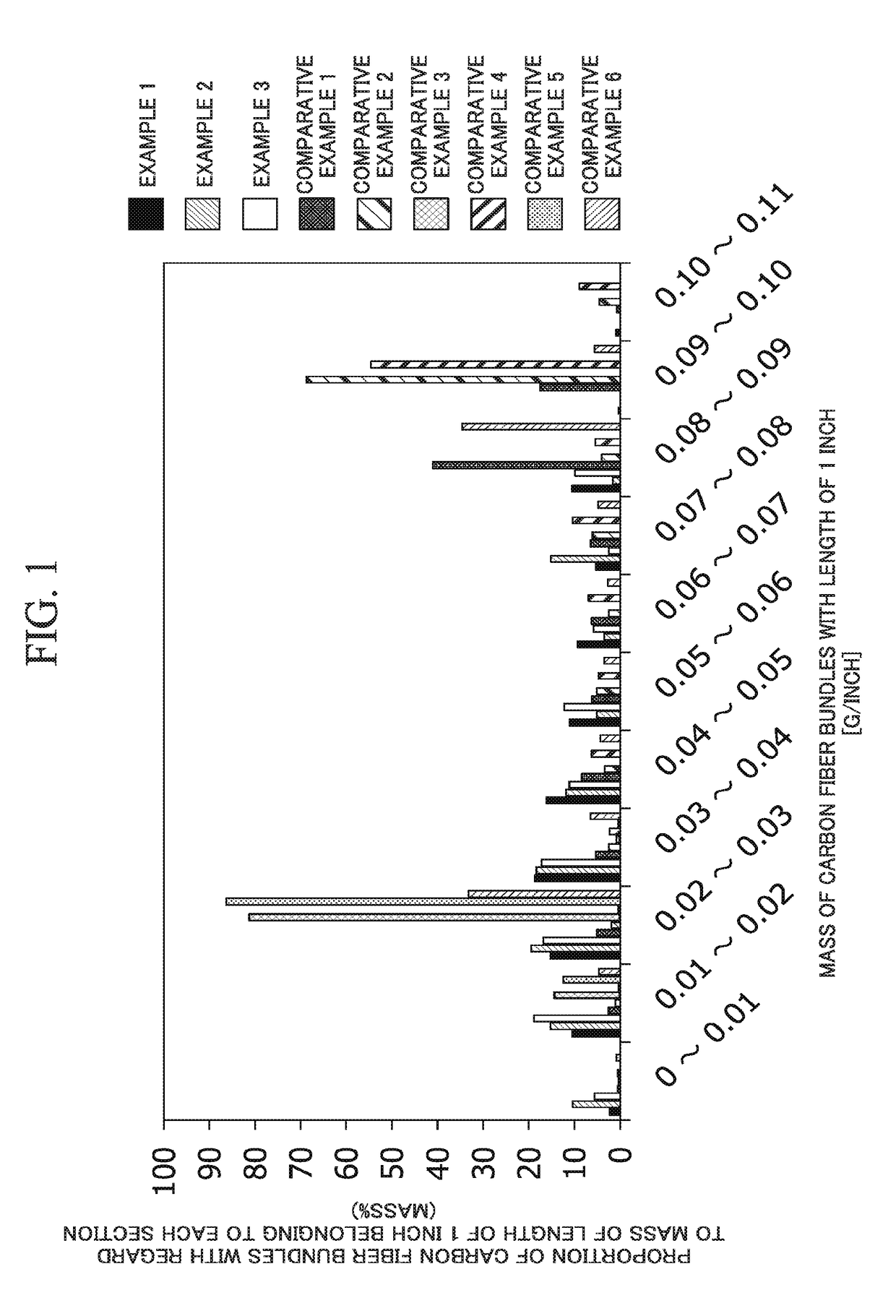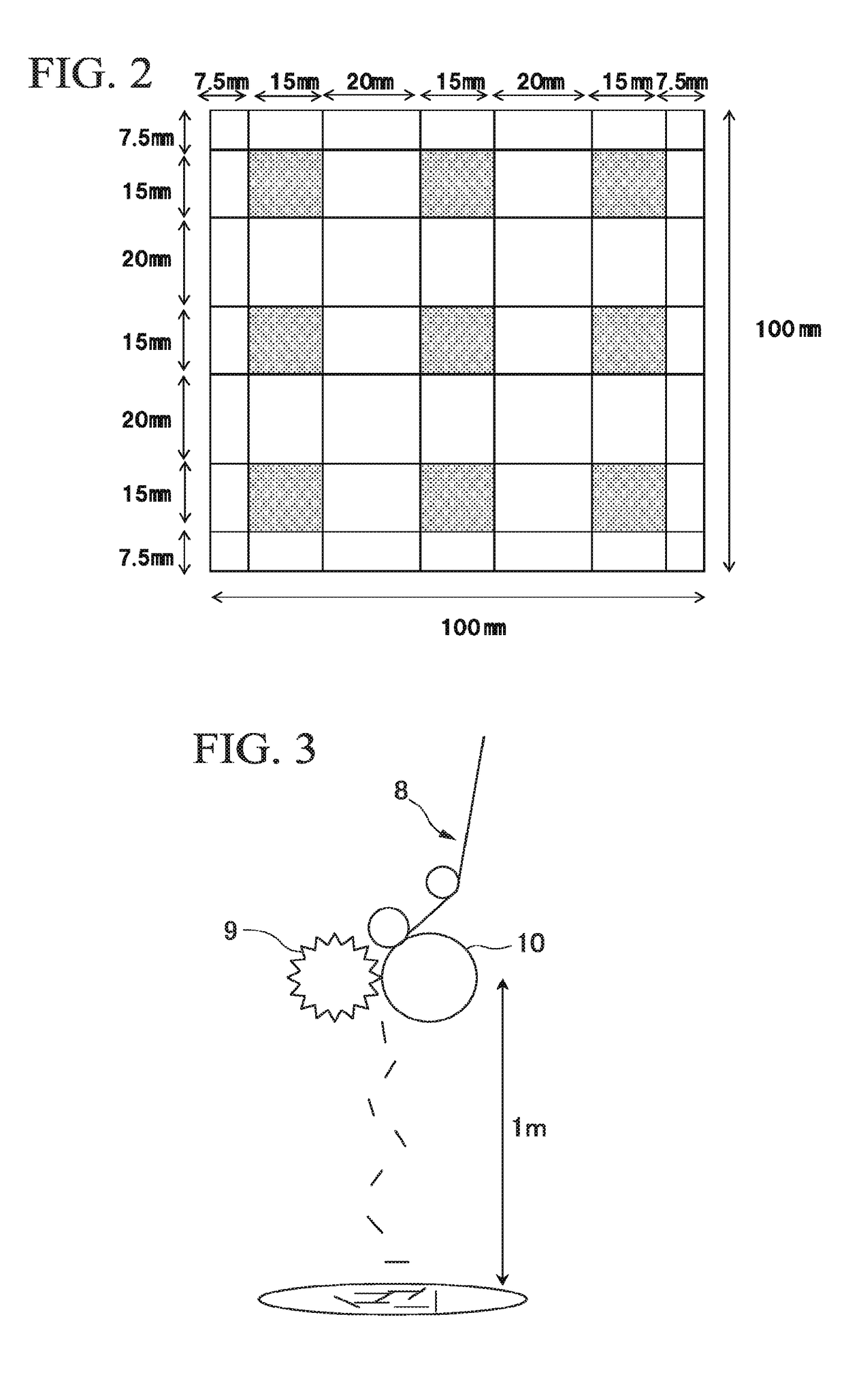Continuous carbon fiber bundle, sheet molding compound, and fiber-reinforced composite material to be molded using the same
- Summary
- Abstract
- Description
- Claims
- Application Information
AI Technical Summary
Benefits of technology
Problems solved by technology
Method used
Image
Examples
example 1
[0160]An SMC was prepared by the method of producing an SMC using the continuous carbon fiber bundle A, aggregates of the carbon fiber bundles were collected by this method, and a mass distribution of the carbon fiber bundles with respect to the mass of the carbon fiber bundles was formulated. A standard deviation of the roughness degree β and the roughness degree β of the obtained SMC was obtained.
[0161]Subsequently, the SMC was molded according to molding of the fiber-reinforced composite material. The obtained SMC molded product was subjected to a bending test according to the method of evaluating the fiber-reinforced composite material. The obtained results are shown in FIG. 1 and Tables 1 and 2.
example 2
[0162]Example 2 was a reproducibility experiment of Example 1. An SMC was prepared using the continuous carbon fiber bundle A produced on another occasion according to the same method of producing an SMC as in Example 1, aggregates on the carbon fiber side were collected by this method, and a mass distribution of the carbon fiber bundles with respect to the mass of the carbon fiber bundles was measured. A standard deviation of the roughness degree β and the roughness degree β of the obtained SMC was obtained.
[0163]Subsequently, the SMC was molded according to molding of the fiber-reinforced composite material. The obtained SMC molded product was subjected to a bending test according to the method of evaluating the fiber-reinforced composite material. The obtained results are shown in FIG. 1 and Tables 1 and 2.
example 3
[0164]In Example 3, an SMC was prepared using the same method of producing an SMC as in Example 1 except that the highly bundling sizing agent 2 was used in place of the sizing agent 1 and an adhesion amount was 0.4 wt %, aggregates on the carbon fiber side were collected by the method, and a mass distribution of the carbon fiber bundles with respect to the mass of the carbon fiber bundles was measured. A standard deviation of the roughness degree β and the roughness degree β of the obtained SMC was obtained.
[0165]Subsequently, the SMC was molded according to molding of the fiber-reinforced composite material. The obtained SMC molded product was subjected to a bending test according to the method of evaluating the fiber-reinforced composite material. The obtained results are shown in FIG. 1 and Tables 1 and 2.
[0166]In FIG. 1, in order to easily compare Examples 1 to 3 with Comparative Examples 1 to 6, when a total mass of carbon fiber bundles measured in each of Examples 1 to 3 and ...
PUM
| Property | Measurement | Unit |
|---|---|---|
| Length | aaaaa | aaaaa |
| Length | aaaaa | aaaaa |
| Length | aaaaa | aaaaa |
Abstract
Description
Claims
Application Information
 Login to View More
Login to View More - R&D
- Intellectual Property
- Life Sciences
- Materials
- Tech Scout
- Unparalleled Data Quality
- Higher Quality Content
- 60% Fewer Hallucinations
Browse by: Latest US Patents, China's latest patents, Technical Efficacy Thesaurus, Application Domain, Technology Topic, Popular Technical Reports.
© 2025 PatSnap. All rights reserved.Legal|Privacy policy|Modern Slavery Act Transparency Statement|Sitemap|About US| Contact US: help@patsnap.com



